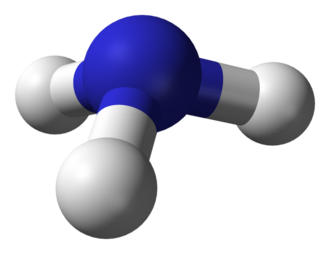In Search of New Fertilizer Tech (No, Really)
| Meet ammonia, the world's most underrated chemical, and just a single nitrogen molecule with three hydrogens attached. Learning how to make it from natural gas and air has changed the face of the earth as much as any technology, including the internal combustion engine, transistor, and antibiotics. |  |
Ammonia is the chemical precursor to nitrogen fertilizers, and nitrogen fertilizers underpin the modern agricultural system that feeds the world. By injecting nitrogen into soil, agronomists have increased yields by enormous amounts, combining with crops designed to pick up maximum nitrogen, to feed the extra few billion people born in the 20th century.
For that, we owe a debt of gratitude to Fritz Haber and Carl Bosch, a couple of German scientists who have mostly been lost to history (like Henry Bessamer, whose steelmaking process dramatically cut its price and enabled the construction of the modern city). One scientist, the University of Manitoba's Vaclav Smil, estimates that 40 percent of the world's dietary protein, "originates in the Haber-Bosch synthesis of ammonia" (pdf). That's a couple billion people worth of impact. These days, 87 million tons of nitrogen fertilizer are produced each year, according to the International Fertilizer Industry Association.
But we're coming up on the one-hundred year anniversary of their 1909 discovery and we're still using the same process.
So, this is the first post in a continuing series dedicated to exploring new fertilizer technologies that could reduce their environmental impact and energy usage while increasing food security.
Let's briefly catalog the problems:
- Food riots have broken out as a result of sharply rising food prices driven by: increasing populations, increased meat eating in the developing world, higher transportation fuel prices, higher fertilizer prices, and biofuel production.
- Apropos this investigation, fertilizer prices are up all over the world because the cost of natural gas is rising. According to one fertilizer maker, the cost of ammonia has tripled in the last decade.
- Nitrogen-based fertilizers get into streams and move down rivers to the coasts of developed countries and cause algae blooms, which use all the available oxygen in the water. The result: dead zones off the coasts of countries that use the fertilizers.
- The farming methods encouraged by nitrogen fertilization -- monocropping genetically homogenous high-yield cultivars, for example -- have encountered serious criticism from environmental and social justice groups. Today's industrial agriculture is energy and resource intensive.
- The Haber-Bosch process, alone, uses one percent of global energy. The high-heat and pressure needed to drive its chemical reactions suck a lot of power.
- In the developed world, the diet that has developed is making its residents overweight and sick, as summarized in "Unhappy Meals" among other articles by Michael Pollan.
Those are (some of) the major problems that new fertilizer technology could help solve.
Of course, the basic triumph of modern agriculture--getting enough calories and nutrients to most of six billion people--is overlooked. We shouldn't sell that feat short, but its clear that the current system is stretched to its limits.
The good news is that because of rising commodity prices, there are
cost-cutting and revenue-growing incentives to innovate in this area. Like
green tech, as the inputs (energy in whatever form) have gotten more
expensive and the environmental impacts (CO2 emissions) have proven more
damaging, scientists and industry start to see the need to create new
technologies.
In this rolling series of blog posts, we're going to look at fertilizer
from every angle: feedstocks, production methods, the way plants use it,
the markets and geopolitics surrounding it, new science for making old
fertilizer, old science for making new fertilizer, its history, and its
future.
![]()
© 2008 CondéNet, Inc. All rights reserved. To subscribe or visit go to: http://blog.wired.com